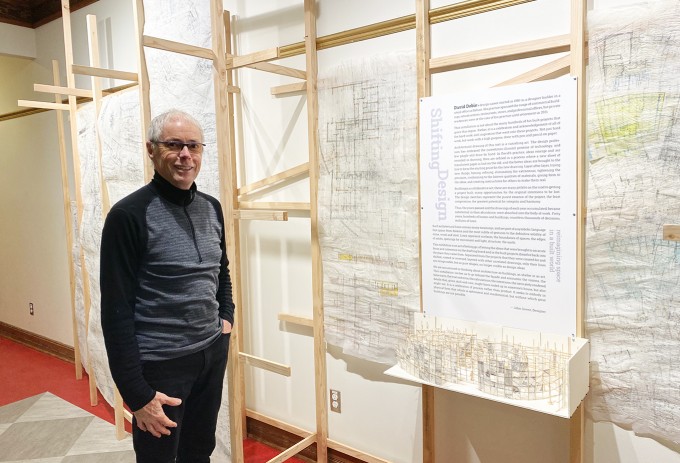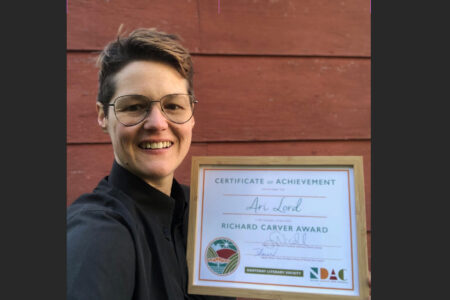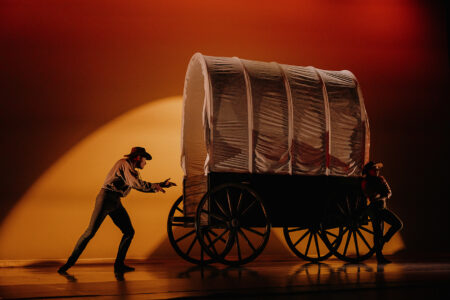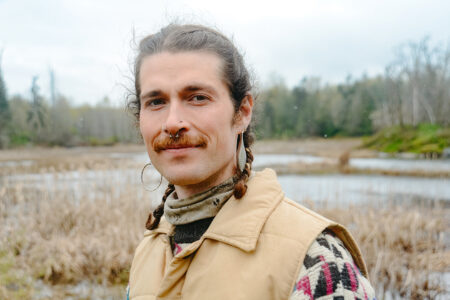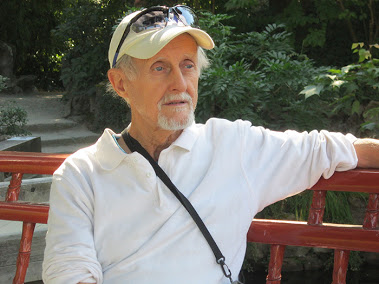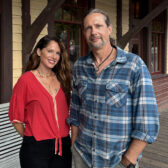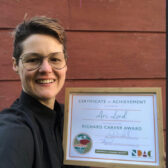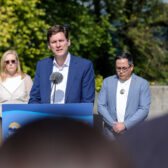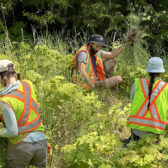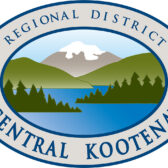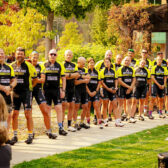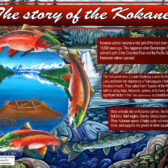Daily Dose — In the realm of Art and Architecture with David Dobie
The realm of art and architecture is a fascinating and diverse field that encompasses a wide range of creative expressions, styles, nuances, materiality and form.
In the realm of art, artists use various mediums such as painting, sculpture and photography to create their works that can evoke emotions, tell stories, and even challenge societal norms. Art in all its forms has the power to inspire, educate, and bring people together and art has always been inherently valued and prized throughout the ages.
Architecture, on the other hand, involves the design and construction of buildings and other structures. Architects usually consider factors such as functionality, form, practicality, materials, safety, and aesthetics when creating their designs – with the ultimate goal of creating buildings that serve the needs of their users and occupants while enhancing and complementing the surrounding outside environment.
Just like a poetic dance, art and architecture often intersect and influence each other and the built environment around it. For example, an architect may incorporate and embed works of art into their building designs, while an artist may be inspired by the structure and form of a building and other aesthetic details and nuances. If executed properly everything comes into a harmonious mixture in the end, and ultimately a piece of art is sitting on a landscape.
In context, this balance and merging of the two have been playing out throughout history and for millenniums, and art and architecture have been closely linked to the cultural, political, and economic events of their time. From the grand structures of ancient civilizations, such as the Giza pyramids of Egypt, the Parthenon in Greece, and Mayan temples in Mexico, to more modernist architecture of the 20th century and the street art / forms of contemporary cities and cosmopolitans. Art and architecture truly have been integral to shaping the world as we know it, and even the Nelson International Mural Festival is a great example of this overarching relationship.
For me, this is an endlessly fascinating subject and I believe this constantly evolving field has a profound impact on the way we experience and understand the world too.
In this edition of The Daily Dose, Editor Jeff Sawyer connects with one of Nelson’s most prolific designers and builder David Dobie, to understand how his designs are influenced by both the realms of art and architecture, and how is own personal philosophies and design principles in this space guide his decisions on this wide-ranging subject.
Your practice has spanned the range of commercial buildings, retreat centres, restaurants, stores, and professional offices, but private residences were at the core of your practice until your retirement in 2021. From your lens and perspective, how would you describe the intersection of art and architecture in the context of your body of work and designs?
David:
I have always considered the context of “art” in what I see and feel in the environment; it has become a life-long pattern to associate the creative nuances that I observe with a higher intent; not necessarily human sourced, but nevertheless ubiquitous in our world. The built world of architecture has this ability and potential to fuse the observed artistic nuance with the contractual intent of the purpose behind any project.
I felt I was an artist before I became a working designer, so it was a natural step for me to integrate the fluidity of nature, form, light, texture, with the needs and desires of people into any project I undertook, regardless of scale.
Jeff:
Was this always purposeful for you, or do you sometimes allow the expression of the space to take on its own nuances artistically?
David:
The underlying purpose was never completely absent; was always present in some form. Undoubtedly the “higher” purpose became subservient to more pressing priorities, like time, like money, personalities. But there were times when the overarching presence of a clear dynamic design idea or concept became front and centre and suggestions to dissuade or distract were soundly rebutted.
Jeff:
There are a lot of varied styles in architectural design, how would you describe the nature of your work and designs?
David:
The nature of design as I considered it within my working career was a mix of coordinated site conditions, appropriate style, client sensitivities and available skill sets to perform the prescribed intentions. On occasion I would work specifically in a particular style more from client direction but usually with the added nuances that I would place upon the outcomes. A variation so to speak that would enhance the form, add vitality and interest without abandoning the pretext of style-fit. Descriptors of my work could be narrowed down to: Uniquely crafted and personalized, delicately proportioned and compatible with the world around it.
Jeff:
Speaking on personalized, what is your design philosophy and approach, and how did you apply it to your projects?
David:
Probably best described in terms of fit and grace. By asking the many questions of clients and associating my own sensitivity to the situation I sought to define a workable context to get close to an outcome that everyone could appreciate. There are many roads to get there and I was willing to try several in order to succeed. I believe that if a project, a house for instance, works in plan, in elevation and in siting it will likely succeed if all the players are in agreement. My approach was to have all in agreement.
Jeff:
How do you balance the aesthetics of a building with its functionality and practicality?
David:
If something is truly aesthetic it will be functional and be practical. When I look at something that does not function well or is not practical, any applied aesthetic quality is truly diminished, and looks like a tired add-on or an attempt to be cute, or as is often the case to be seen as trendy and celebratory. Architectural photography can unfortunately go down this road at times by exposing the awesome beauty of the sculpted line and finely lit texture, only to fail miserably when tested for functional practicality. The images take over in our culture and drive these trends; we are left with ambiguous and unobtainable realities. I think the subconscious recognition of this is depressing to anyone who looks deep enough. So my own ambitions were to marry the aesthetics in concert with functionality in a fluid discourse that embraced and supported one another, and to find a way to take the mundane further than expected, to where it could be noted, and appreciated.
Jeff:
How do you see your role as a designer and your relationship with your clients?
David:
I saw this relationship in a personal way, as a guide and support person with the design abilities beyond those of the clients. My role was to listen well and speak back in a language of conversation and diagrams where they could understand, and to generate a group of people who would facilitate the expected outcome. I didn’t necessarily feel that my word was the last word on the subject, contrary to the teachings in school. Given the scale I worked in, I felt it equally important that the client had full access to decision making and was fully in agreement with the design. Very hard to proceed without those elements firmly in place.
Jeff:
How do you see your role as a designer and your relationship with the built environment?
David:
As a designer adding to the behemoth of the built world, I felt compelled to create as light a touch as possible. Which was not always the case. I see the overall impacts of what we do as human society and can’t help but see the endgame not looking so good in spite of our best intentions and best-case scenarios. I often felt in conflict with the ambitions of a designer-mind to a less than rosy world view. Keeping a lid on, lowering our expectations, tempering our desires, and needing less goes against the grain of the kinetic energy in the built environment.
Jeff:
How do you see your role as a designer and your relationship with the natural environment?
David:
I feel that the modern artist Andy Goldsworthy has embodied the purest form of building within the natural environment. Though his work is not trying to solve the logistics of living humanity, it does explore in profound ways how the human mind can engage with nature, it's temporariness. I also look at the work of Antoni Gaudi and his currently constructed Sagrada Familla in Barcelona which to me is like a living building it is so steeped in natural form and texture while still serving a direct purpose to people. I tried to fit in somewhere between the two distant ideals.
Jeff:
How does the above affect the context of your work and designs as a whole?
David:
Even a small opportunity like the instance of stepping outside your door can be a moment to reflect where you are in this moment, the world you live in, how morning light might play on the pathway. Just as inside the entry when you arrive back to your home after time away, at work or wherever, there can be a moment to reflect and to pull all the parts of your world into one understanding, and hopefully of well-being.
I often if not always would look for ways to knit these small discreet and unobtrusive elements into my design process
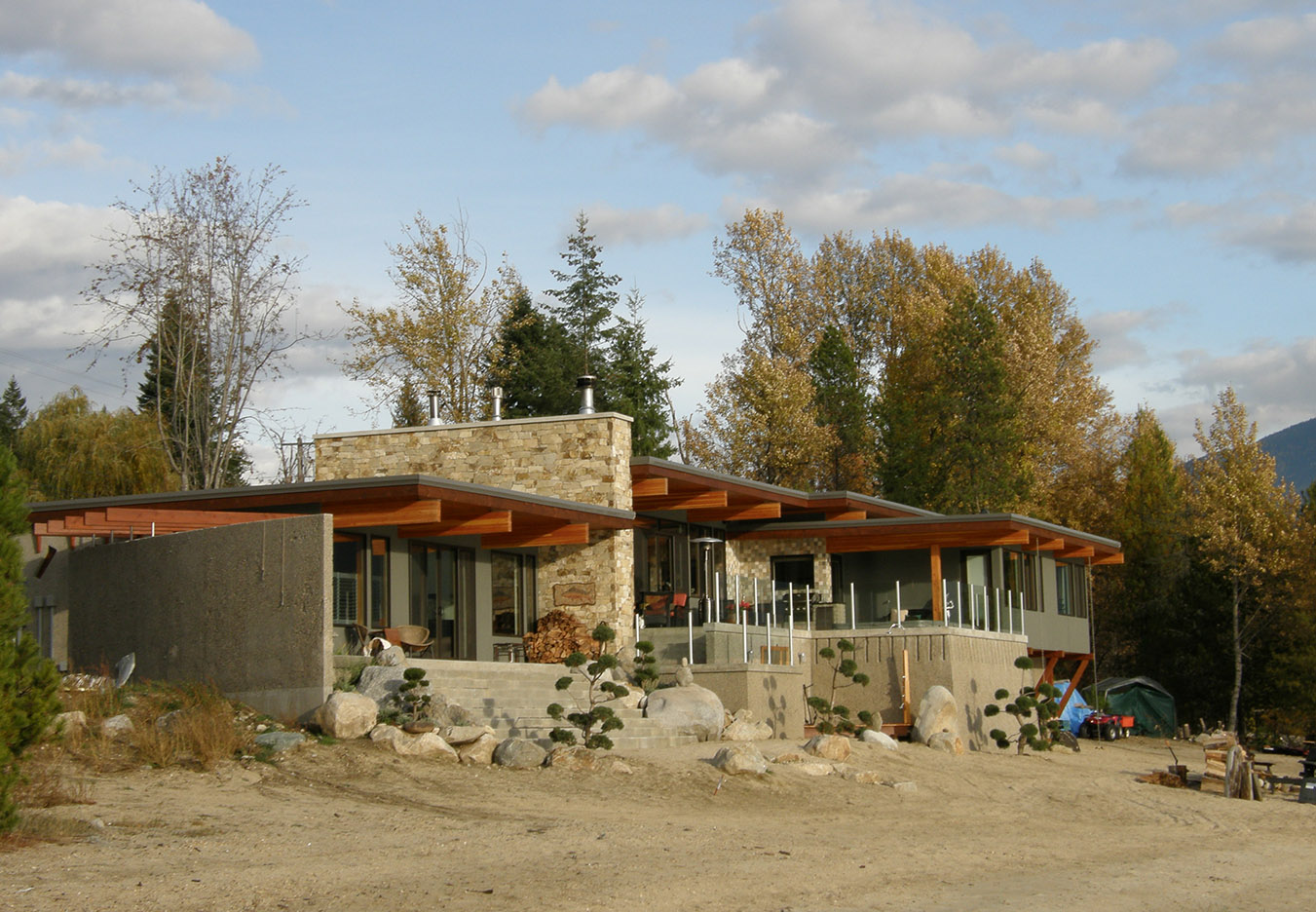
This residence on the North Shore in a modernist design style. — Submitted
Jeff:
How do you feel climate change and displacement is going to affect the future of architecture on a macro and micro level?
David:
We are approaching uncharted territory and are giving way to untold sources for information and direction. I think we all know down deep what could happen to us directly. We certainly have endless news cycles to inform us of what happens elsewhere. Plagues, drought, storms, fire, earthquakes, war, crashing economies… all have the ubiquitous effect of exposing our vulnerability. What one does with that information is what we see on the ground, in masses and individually. Climate change is not happening all on its own; it is creating sub stresses, scarcities, geo-political power shifts, and all of it effects humanity.
Architecture may solve little local issues but not the overarching problem; globally architects and designers have always been noted for their world-saving ideas, but none of which has made a world scale difference so far. On a small scale, sure, we can heat our houses with less energy, use less land to live on, but that is not the answer to the big question.
Jeff:
How do you incorporate sustainability and environmental concerns into your designs, and do you have any advice for future architect’s and designers?
David:
My attempts to be sustainable were usually met with my own inner conflicts and the immediate constraints of all those involved with the project. Building a sustainable house begs the question why are you building in the first place when there is already vacant built space to be repurposed and inhabited? Currently it is self aggrandizing to say we are building sustainably, because if we don’t label it as such we are considered irresponsible. Yes, by all means make the best choices that are immediately available and compatible with the intentions.
One of the most “sustainably conscious” houses I ever designed… had been renovated within five years of being built because the new owners did not feel comfortable with the materials (selected by the previous owners) of the kitchen and three bathrooms. The terms being tossed around and adhered to was “dated” and “timelessness". How does this fit into sustainability?
My advice, do the best you can, in any and all situations.
Jeff:
Even though you retired in 2021, earlier this year you curated an exhibition at the Capital Theatre called ‘Shifting Design’ Re-imagining space in a built world.
We are accustomed to thinking about architecture as buildings, habitat, shelter and sometimes as art, what did your exhibit represent for you?
David:
I was exploring the imaginary world of the design process where ideas and concepts are still within the wanderings of my mind before they took on physical dimensions. I wanted to use all the drawings I produced and had filed in my office cabinetry, both as design sketches and drafted plans, and put them into an amorphous form contoured to the environment (The Capitol Theatre in this case). I was expressing these ideas of our impermanence and the fragile nature of who we are and what we do in this world.
The way light diffuses through to show the layered paper panels illuminates the way design ideas transformed over time and were all joined together in my career as a constant flow. At some point this will be installed in an environment-space possibly outside, inside or both where by an observer is free to walk through and interact around these filmy structures, further emphasizing their translucent nature and playing with the idea of our vulnerability and creative potential.
Jeff:
Why did you want to explore this now in your life, and what do your sketches, drafts and architectural lines convey to you?
David:
I have always thought about doing something like this, at a large scale with a medium (drawings on paper) that we are not that familiar with. I have sculpted in stone for many years and have this enjoyment of seeing the form take shape as material is rendered away, reduced to reveal a direct form from within. This new sculpture is looking the other way, adding material to create form, and in the end completing a circle for me. While working full time I simply never had the time available to me to explore in this way
Jeff:
How do you feel space is being accepted now versus when you began your career?
David:
Space is entering a new paradigm with Virtual Reality and Artificial Intelligence and we are being shown new horizons of what space is and how we engage with it. Ask the question; do I need the new physical space around me or do I just need to feel that the space is there, tricking the senses enough to satisfy the longing. The teaching of race car driving and piloting is done primarily on simulators, which is way less expensive, and way way less dangerous.
I wonder if the same could be realized inhabiting humble abodes while living in simulated space – again way less expensive and maybe an answer to the above concerns about climate change…. It’s much easier to change the channel or the decor. Of course. the realm of house and gardens being the juggernaut it is, it won’t stop anytime soon and we will continue to invent or reinvent space to fit our desires and needs.
Jeff:
Now that you are formally retired, what are you planning to do to maintain your creativity? Any further pursuits?
David:
I considered retirement several years before actually making the switch; often questioning the direction my life would turn towards. I am fortunate that I had the time and space to make these decisions and that I have had a life long passion for creating things. Artistic endeavours have always been a big part of my life and this won’t change with me not working professionally. I’ll continue to draw, sculpt and build as the day presents itself but without the contractual obligations that steered the process and for sure it will be mixed with the observations of the natural world around me, hands in the soil, walking in forests, floating on water.
Jeff:
Your take on AI and Architecture, let's have it?
David:
AI in architecture from this vantage point today looks like a unbottled genie. The steps taken with computer assisted design when it arrived manifested major shifts in how buildings were conceived and rendered, contracted and constructed. AI is probably ten times that shift and though we don’t have the hindsight yet, I can only think that less and less will be in the hands of human creativity and more given over to the “program”.
Our position then will simply be reactionary as observers and approving officers, and if we are lucky a critical participant. Our loss of actual and tactile involvement is not in our best interest long term.
——————————————————————————————————————————-
Be sure not to miss David’s reiteration of his ‘Shifting Design’ project (Phase Two) to be exhibited at the Nelson City Hall. This unique installation will encompass seven curved panels in isolation linked together for stability and continuity, comprising of reimagined architectural drawings and sketches on a light wood framework to evoke the process of design he has used throughout his career.
The design exhibit will be open for viewing on the front entry lawn of Nelson City Hall, August 5th through to September 11th 2023.
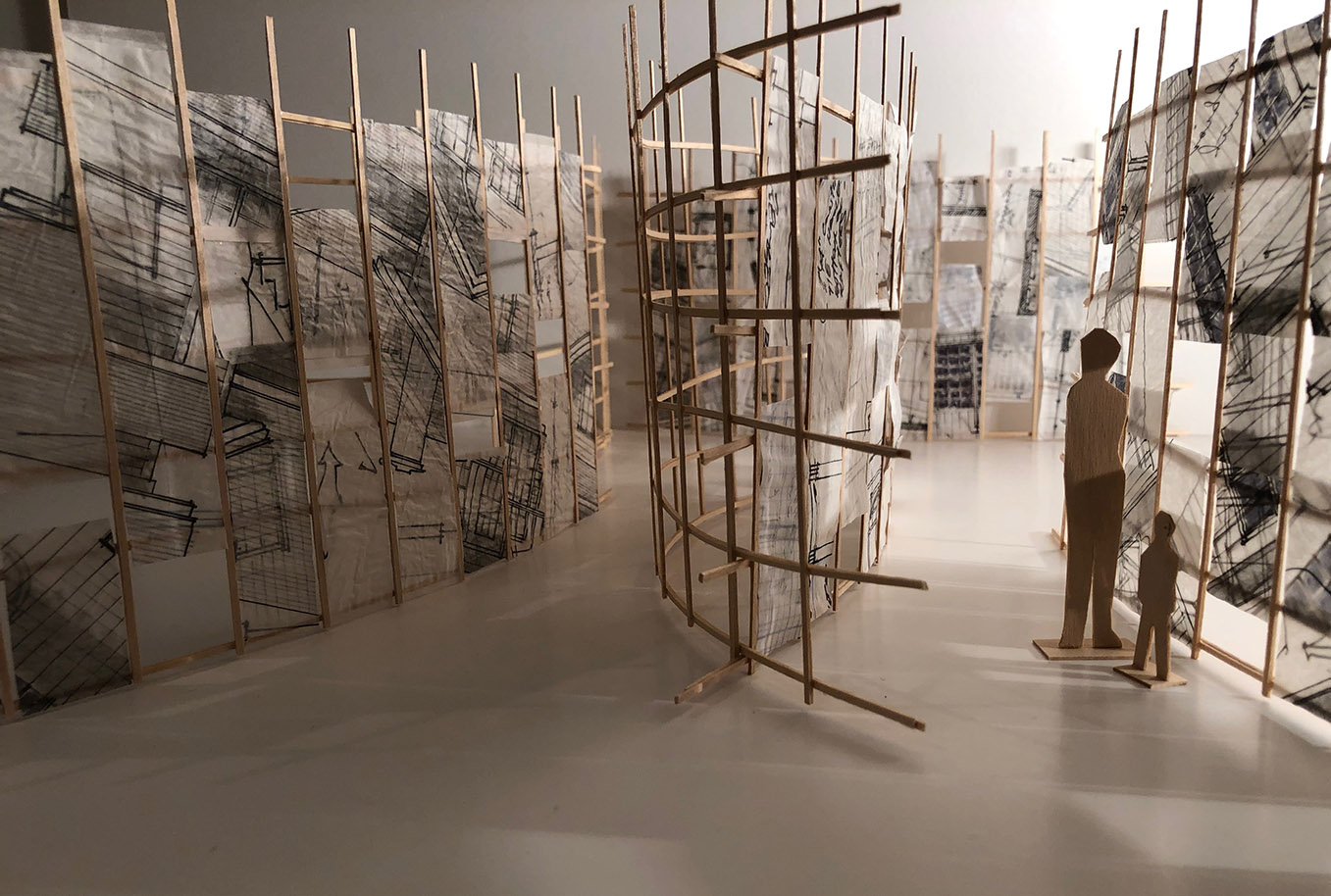
Photo Sketch of 'Shifting Design' Re-imagining space in a built world.


